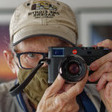M11 Dynamic Range Specification
-
Recently Browsing 0 members
- No registered users viewing this page.
-
Similar Content
-
- 20 replies
- 1,500 views
-
- 193 replies
- 20,869 views
-
- 6 replies
- 791 views
-
- 22 replies
- 1,942 views
-
M11 Tuning
By R. K.-B.,
- 6 replies
- 1,148 views
-



.thumb.jpg.453e29217325d25605a012f22452719b.jpg)
Recommended Posts
Join the conversation
You can post now and register later. If you have an account, sign in now to post with your account.
Note: Your post will require moderator approval before it will be visible.